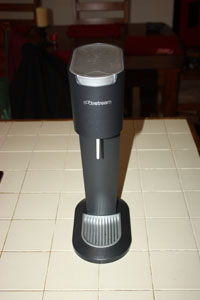 Last Christmas, Leora gave me a SodaStream. Before then, I hadn’t even heard of the thing. And for someone with my level of soda addiction, it seemed like the greatest, most magical gift in the world.
Last Christmas, Leora gave me a SodaStream. Before then, I hadn’t even heard of the thing. And for someone with my level of soda addiction, it seemed like the greatest, most magical gift in the world.
If you’ve never used a SodaStream before, the idea is pretty simple. You attach a CO2 tank to your SodaStream, fill up a liter sized bottle of water, attach the bottle to the SodaStream, press a button a few times, and BAM! – you have soda. “What about flavorings?” you ask. SodaStream sells some fantastic soda mixes that are remarkably close to their major brand counterparts. And I do mean remarkably. SodaStream’s Fountain Mist (or, as I call it, Mountain Fist) and Orange mixes are two of my favorites. I often have a hard time telling them apart from their major label counterparts.
The SodaStream devices vary in price, but they’re not terribly expensive. I think mine cost around $80 or so. The mixes are also pretty cheap – usually around $4.99 for a 12 liter supply depending on where you buy them. The most painful thing about the SodaStream is the CO2. The 14.5 oz. CO2 tanks are small – I get about 3-4 weeks of use out of one. And because the tanks use a proprietary fitting, you can’t just take them to just any ole place to have them refilled. You either have to either buy a brand new tank for around $35 or exchange your old tank for a new one at around $15. Doing the math for a year, that’d put me at around $195 on CO2 alone.
There is a cheaper way to deal with the whole CO2 issue I’ve discovered. Not long after I exchanged the first CO2 tank, I spent a little time learning about gas, tank fittings, and a bit about home brewing, which has a few things in common with home soda making. I decided to take the plunge and “augment” my SodaStream. I purchased a 10 lb. aluminum tank and a special fitting for hooking the thing up. I made a small modification to the SodaStream so that I could hook up the new tank. I also had the 10 lb. tank filled with CO2 for less than $20. I suspect it’ll be a while before I need to worry about running out of CO2.
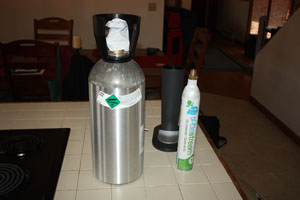
If you’re thinking about doing the same with your SodaStream, here are some things to keep in mind.
Tanks – You’ll want to make sure you purchase a beverage grade CO2 tank with a CGA 320 fitting.
I came across a lot of conflicting information online concerning what qualifies as a beverage grade tank and whether or not it even matters. It does matter. Beverage grade tanks are made from aluminum. Tanks made from any other material may introduce contaminates and, in the case of lead-lined tanks, may even pose health risks. Beverage grade aluminum tanks aren’t hard to find. I found mine on Amazon for around $80.
The CGA 320 fitting is a very commonly used fitting found on CO2 tanks. Home brewing places like to deal with kegerator-style CO2 tanks, which also use this type of fitting. There’s nothing preventing you from using another type of connector. But it may be harder to find someone who can fill up your tank. It may be even harder to find the right adapter for connecting the tank to the SodaStream.
Connectors – I don’t have much to say about this except that a quick Google search will turn up a number of vendors that sell CGA-320-to-SodaStream connectors. I bought the Freedom One model from CO2Doctor. My experience with these folks was pretty awesome. They were quick to answer my questions and help me troubleshoot my hookup issues. I had my tank hooked up and working in no time.
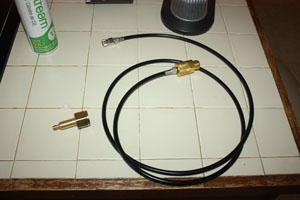
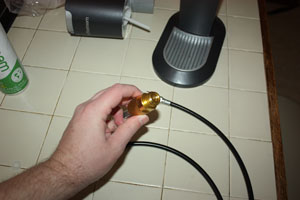
CO2 – Finding a local place to fill my tank took a little bit of work, but not much. I started out calling the restaurant supply places and beverage distribution companies, all of which turned out to be dead ends. I then talked to a couple of shops that specialize in home brewing supplies. They were able supply me with CO2, but only if I agreed to exchange my empty tank for a full one and they wanted to charge me $30 to do it. In the end, I found a local welding supply company who agreed to fill the tank for $18. That’s a lot of CO2 for cheap.
Hooking It All Up – Because my SodaStream didn’t provide a good place for me to run the hose through, I had to drill out a tiny hole in the base so that the machine could sit right on top of the hose. The SodaStream fitting can be hand tightened, but it’s very important that you tighten the fitting connecting to the CO2 tank with a wrench. Otherwise, you’ll leak gas all over the place. Hand-tight isn’t enough.
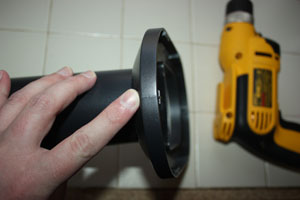
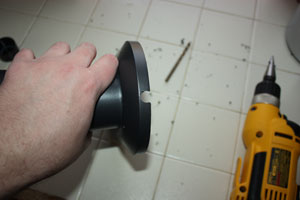
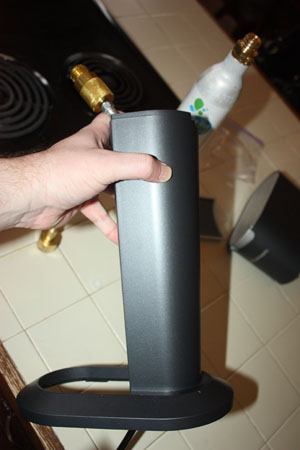
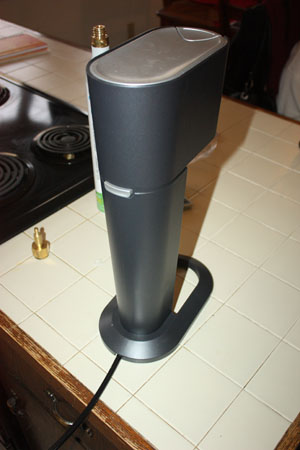
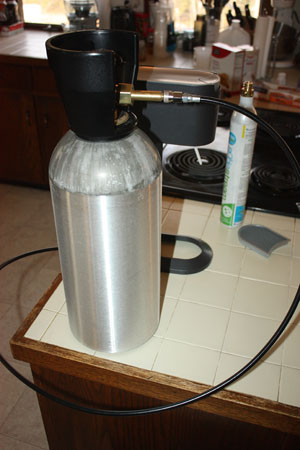
Once everything is hooked up and ready to go, you’ll find that you’ll need to experiment a little bit to find the right number of presses to get the carbonation you’re accustomed to. The pressure coming into the SodaStream from the new tank will be different than from the original SodaStream tank. So the recommended formula of three farty sounds probably won’t result in something you’ll be happy with. For my setup, I usually pump it until I get the three sounds, lift the bottle to release the pressure, and pump it again for three more sounds. Also, be careful when you add the mix. If you go carbonation crazy like me, you’ll find adding in some of those mixes quickly can result in a soda volcano.
Have fun and good luck!
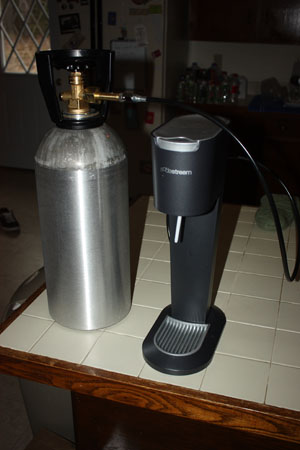

Seems like CO2Doctor is no longer in operation.
Sodasteve, I just checked and it looks like CO2Doctor is still going strong. Try the link again. Maybe they were doing maintenance or something when you tried to connect.
They take your money and never ship- beware!
I loved this invention. I drank a billions bottles of bubbly water from it. I never had a problem with my order 4 or 5 years ago. So it sucks this guy is out of business, his ideas were genius and sodastream are a bunch of freaking scammers selling those pimpy sized bottles. FU sodastream! Problem is that I lost the world’s tinniest rubber o-ring grommet that fits on between the black hose and the copper fitting that screws to the co2 tank. It’d be super sweet if anyone has a micometer to check it’s size, without it the freedom one won’t work and the CO2 leak